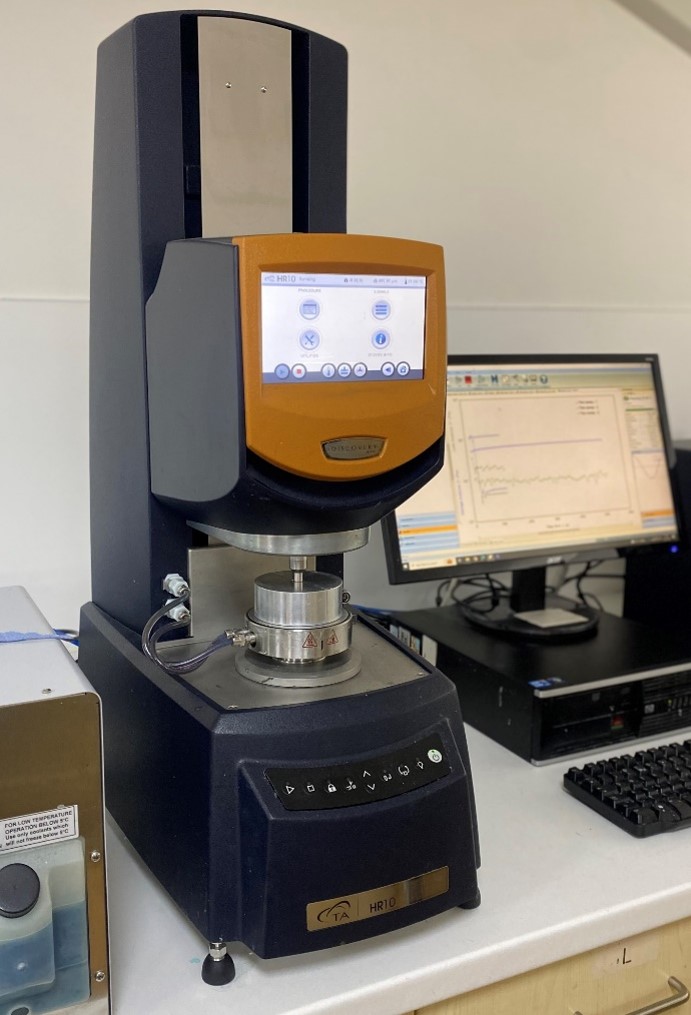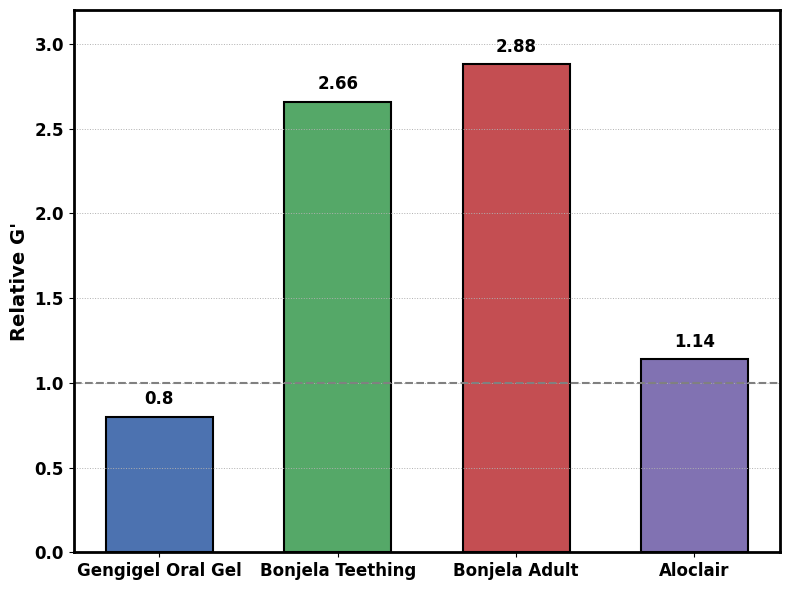
At the Centre for Industrial Rheology, we provide rapid mucoadhesion characterisation services for products such as mouth gels. In this study, we benchmark four leading mouth gels to evaluate how well each product may adhere to the mucosal membranes of the mouth. This influences the duration of relief, therapeutic efficacy, and hence the consumer experience of the mouth gel.
Our rheological approach can be crucial to help formulators choose the best polymers for promoting mucoadhesion. Formulations that exhibit excellent mucoadhesive properties can confidently promise longer-lasting relief, allowing a premium market positioning. By quantifying how well products bind to mucosal membranes, we deliver actionable insights for product benchmarking and formulation optimisation.
Rheology as a Tool to Quantify Mucoadhesion
Mucoadhesion reflects the ability of a material to adhere to mucosal membranes and is an extremely important functional property for mouth gels. We employ oscillatory rheological profiling to offer a robust and repeatable approach to assess mucoadhesive behaviour.
This involves subjecting the sample to small controlled oscillatory deformations, which can be thought of as gently wobbling the sample to observe how its internal structure responds. From this, we can determine the storage modulus, which represents the elastic, or “solid-like” behaviour of the sample.
To assess mucoadhesion specifically, we examine how the storage modulus changes when mucin, the key glycoprotein component of mucus, is introduced to a sample.

Some combinations of mucoadhesive polymers and mucin demonstrate a marked increase in modulus. This increase in modulus demonstrates the synergistic interaction between the product and mucin, contributing to mucoadhesion. In a real-world scenario, this translates to a product that is more likely to stay applied in the mouth, delivering prolonged relief. For formulators, this means better control over soothing agent delivery whilst providing a scientifically backed claim to lasting relief.
Mucoadhesion Testing on Mouth Gels
We assessed the mucoadhesive properties of leading mouth gels by measuring the relative increase in storage modulus (G’) when each gel was mixed with mucin. The results show clear differences in how well each product interacts with mucin.

- Bonjela Adult showed the strongest interaction with mucin, exhibiting a relative G’ of 2.88. This suggests it forms a more robust, elastic structure when combined with mucin, a strong indication of excellent mucoadhesion.
- Bonjela Teething followed closely with a relative G’ of 2.66, also indicating strong mucoadhesive performance
- Aloclair showed a more modest increase, with a relative G’ of 1.14, just above the baseline.
- Gengigel Oral Gel showed no positive interaction with mucin, exhibiting a relative G’ below the baseline at 0.8.
The observed variations reflect meaningful differences in how effectively each product adheres to mucosal surfaces. Products such as Bonjela Adult and Bonjela Teething are more likely to remain in place longer, maintaining contact with the affected area. From a consumer’s perspective, this translates to extended relief. On the other hand, products like Gengigel, which do not appear to show any positive interactions with mucin, may not adhere as effectively, potentially providing limited relief.
Summary
This study highlights the advantages of using rheology to rapidly assess mucoadhesion in mouth gel formulations. By quantifying the synergistic interaction between gels and mucin, we can quickly identify products that exhibit superior mucoadhesive properties.
For formulators, rheological mucoadhesion studies provide rapid insights into mouth gel performance, with scientifically backed data to support claims of longer-lasting relief. If you would like to discuss further how we can benchmark your formulations using mucoadhesion testing, do not hesitate to contact us.
